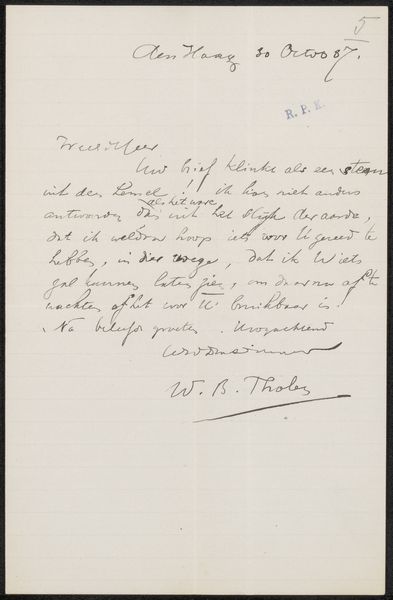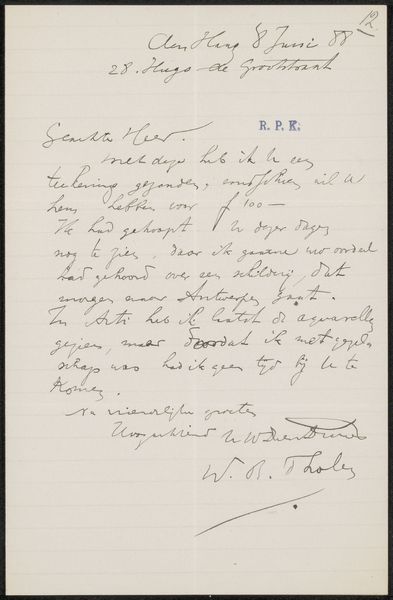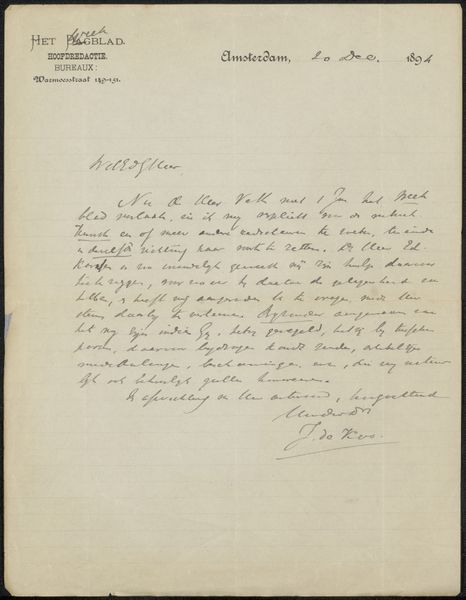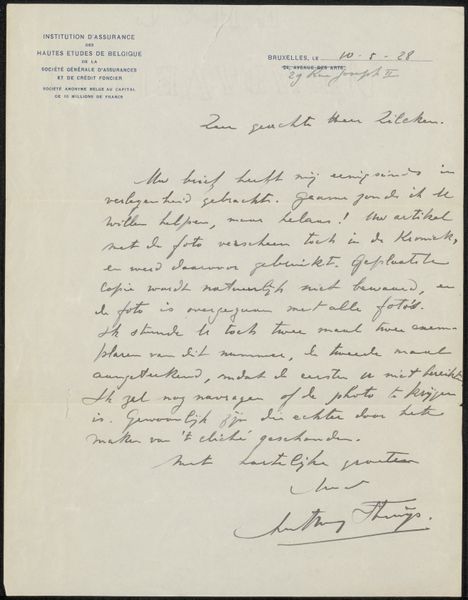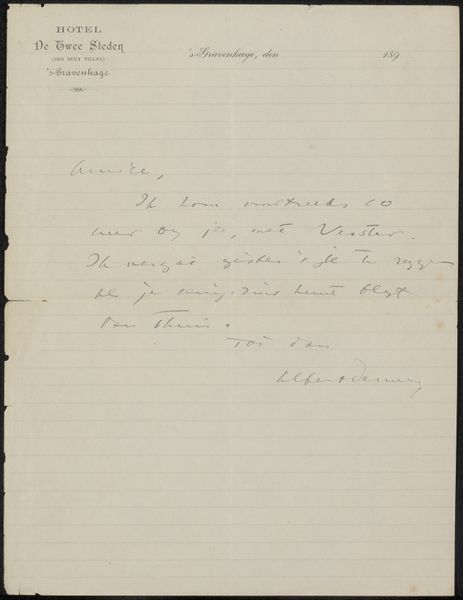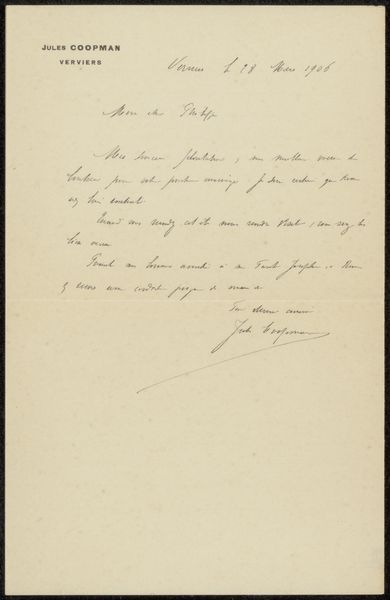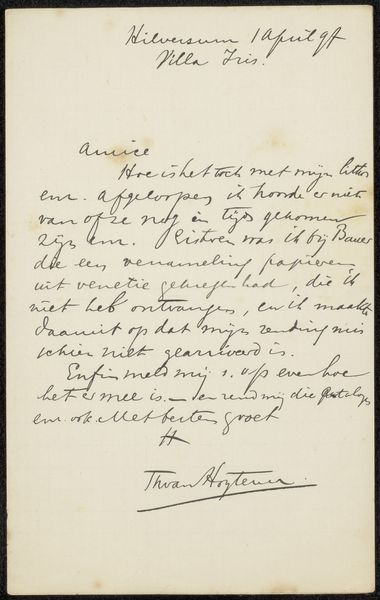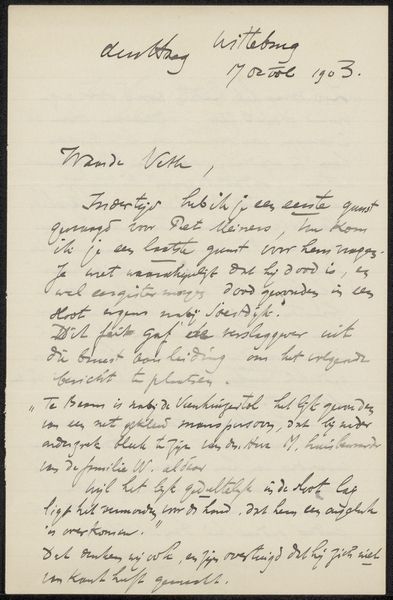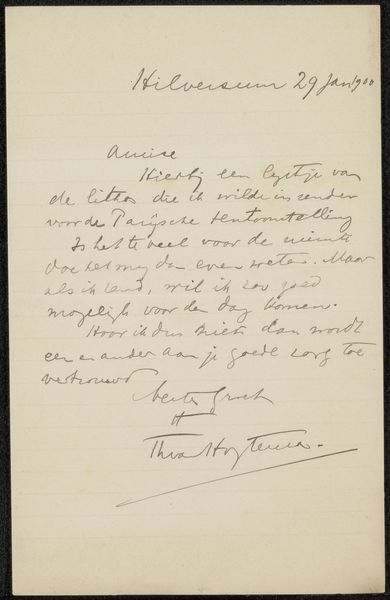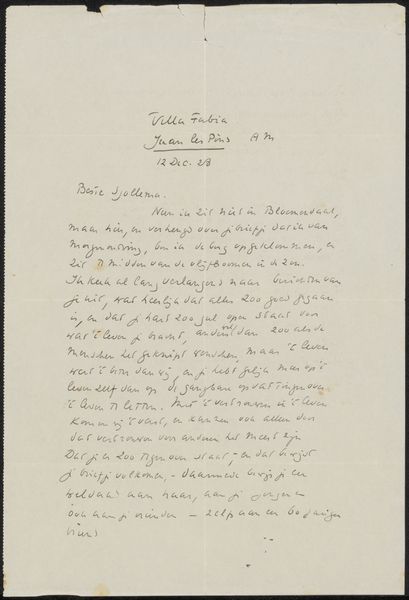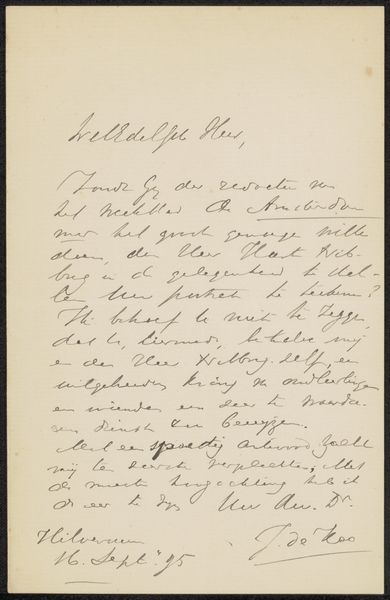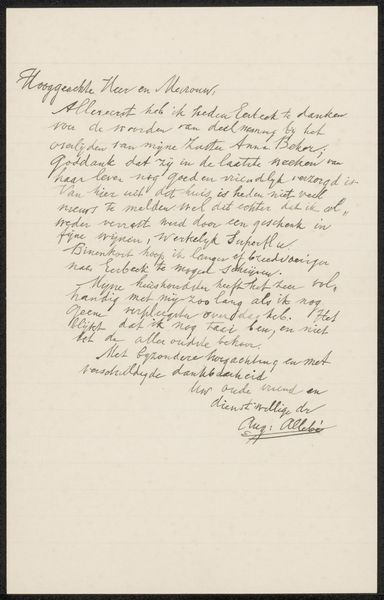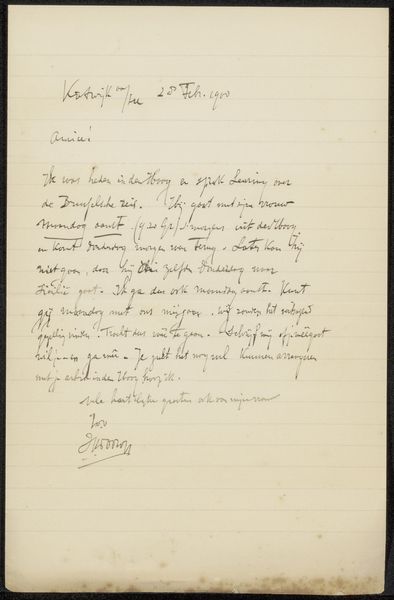
drawing, paper, ink, pen
#
drawing
#
dutch-golden-age
#
pen sketch
#
paper
#
ink
#
pen
Copyright: Rijks Museum: Open Domain
Curator: Here we have Willem Bastiaan Tholen's "Brief aan Philip Zilcken," possibly from 1899, a personal note rendered in ink on paper, currently residing at the Rijksmuseum. Editor: My initial feeling is one of intimacy, of a private thought caught mid-flight. The script itself possesses a quiet elegance; the letter, I can't help but note, almost looks untouched despite its age. Curator: It's compelling to consider the means of this correspondence. The materiality itself speaks to a bygone era – the paper stock, the ink's particular tone, Tholen's choice of a pen—all of it would have been readily available materials. Its very existence as an object tells us about access to production in its moment. Editor: Indeed. Letters are artifacts, too. The loops and flourishes of the handwriting signal something more than a mere message, perhaps even character or artistic intention. How deliberate was the handwriting, considering Zilcken’s familiarity with the nuances of his friend’s penmanship? The symbols within, though mostly words, still reflect a shared cultural understanding between sender and recipient. Curator: Precisely. And it prompts thoughts on artistic labor itself. Was this letter dashed off in a moment, or meticulously crafted, with the choice of each word holding meaning, to persuade a possible collaborator of a new work. This challenges notions of 'high' art, pushing a 'private letter' into the realm of crafted objects, Editor: Considering that "Brief aan Philip Zilcken" translates as "Letter to Philip Zilcken," I wonder what visual symbolism it held for its recipient, Philip Zilcken? Perhaps seeing Tholen's characteristic script brought feelings of comfort, familiarity, or a particular memory associated with their friendship and artistic dialogue. Curator: From a purely materialist view, these signs all provide essential data—clues to understanding not just artistic intent, but also artistic possibilities within a socio-economic framework of the late 19th century. Editor: This small piece truly emphasizes the importance of understanding context in art. We learn much about their relationship, I think. Curator: Yes. Investigating a piece like this—even a letter—expands how we regard process. Editor: It has enriched my appreciation of Tholen, seeing the seeds of creativity even in the simplest exchange.
Comments
No comments
Be the first to comment and join the conversation on the ultimate creative platform.
